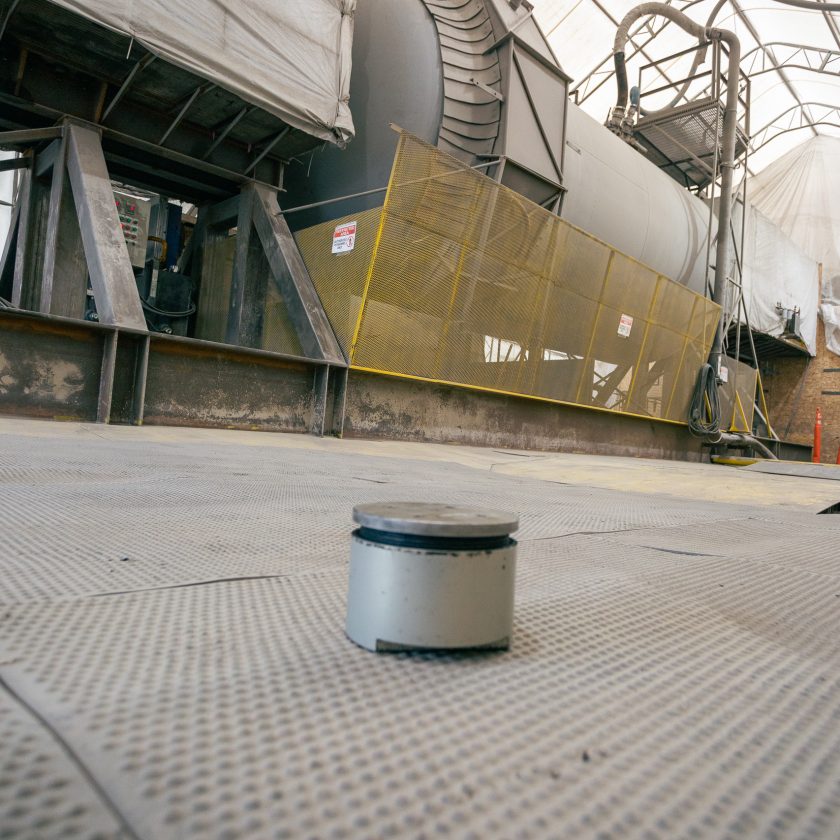Portland Cement Association President and CEO James Toscas penned an editorial for The Hill asking Congress to get moving on infrastructure investment. He wrote:
 |
| James Toscas |
“As Congress and the Trump administration consider an infrastructure package of up to $1 trillion, U.S. cement and concrete manufacturers that stand to play a critical role in revitalizing the nation’s infrastructure are converging on the capital with a clear message: Don’t delay.
It is no secret that America needs to upgrade its infrastructure. For many years, civil engineers have given the U.S. infrastructure abysmal grades. These grades are not an abstraction.
Americans have lost tires and wheels to potholes, have put up with mounting flight delays, have been evacuated from their homes due to floods and dam failures, and they have had their health threatened by outdated water networks. Our systems cannot handle the demands of today’s America, let alone those of tomorrow.
What will be the impact of increasing population concentrated in cities? Of the shift to online shopping and delivery? Of autonomous vehicles?
All trends point to the need for better and more efficient infrastructure than what we have, while what we have has been getting worse and less efficient.
Poor infrastructure is a drag on the American economy and on society in general. Conversely, modern, efficient infrastructure can help boost the economy and make life better for all.
The message is clear – America’s lawmakers must act now. Not next year, not in another Congress.
The most critical step in revitalizing America’s infrastructure is to provide sustainable long-term funding mechanisms.
This is fundamentally necessary not only to repair and upgrade the traditional infrastructure systems we have today, but also to build the next generation of systems that will serve us far into the future.
Funding for highway and bridge construction is particularly crucial. Lawmakers currently pay for this through the ‘Highway Trust Fund.’
As with many federal programs, the intent was good, but the execution has been flawed.
Specifically, the money going into the Highway Trust Fund has not been sufficient to maintain our current 20th-century system of highways and bridges, let alone build a 21st-century system.
This week a number of cement and concrete-related organizations, including the Portland Cement Association, will press Congress to take action. The U.S. cement and concrete industry employs 535,000 people and contributes $100 billion annually to the economy.
Our industry will make several key points to Congress:
- A strategic asset must be funded strategically. America’s infrastructure is a mainstay of our economy, supports our national security, and directly affects our quality of life. A sustainable system for generating and managing sufficient funds to maintain and expand the nation’s infrastructure, year after year, is absolutely essential.
- When you build it, build it right. Investments in U.S. infrastructure should reflect the capabilities of a first-world country, built to last for a century, delivering maximum value to the citizens that pay for it. Designs should be evaluated on true costs and impacts over their entire life cycle, not simply lowest up-front price – we’re not buying lettuce, we’re equipping our nation. Design innovation and healthy competition among alternative paving systems should also be encouraged. A study conducted by MIT shows that when there is competition among different types of pavement, for example, prices for both products go down – saving government and taxpayers money.
- If you fund it, we can supply it. Our economic analysis shows that the industry can readily scale up to meet any currently proposed revitalization plan, including a border wall. For example, the U.S. cement industry is operating at only 79 percent of production capacity. Manufacturers are adding even more domestic production capacity each year: 1.3 million metric tons in 2016 alone, and another 1.6 million metric tons planned by 2018. We can do this with American cement, and we’re ready to roll.
- Delay has cost. The current condition of our infrastructure is impacting the economy and society every day. Because these costs are spread over the entire economy and population, they are not obvious – but they are immense. Congress and the President must therefore act soon.
We’re ready to go when you are.”
Cement Consumption Growth Predicted For Next Two Years
The Portland Cement Association (PCA) expects U.S. cement consumption to reach 3.5 percent annual growth during the remainder of 2017 and 2018, based on analysis of data and policies likely to impact the industry in the years ahead.
Speaking before the IEEE-IAS/PCA Cement Conference in Calgary, Alberta, Canada, PCA Senior Vice President and Chief Economist Ed Sullivan said that while details on specific federal U.S. policies are not yet fully available, the association is forecasting growth in the years ahead using conservative baseline estimates for factors such as infrastructure spending and tax reform.
“While fiscal stimulus will boost cement consumption, there are other economic indicators that will temper growth,” Sullivan said. “Infrastructure policies also take time to implement, so you could be looking at 11 to 22 months before new projects truly get underway.”
Tax reform will have a key impact on cement consumption, as it drives consumer spending and confidence that play heavily with the housing sector, according to PCA.
“When you hire a worker, you hire a taxpayer,” Sullivan said noting that additional funds generated from consumer taxes and spending will help drive moderate growth in public construction and housing markets.
“The underlying fundamentals supporting economic growth are positive, though we’ll maintain a watch on how the U.S. government addresses possible inflation and immigration policy,” Sullivan said. “This confidence in stable, sustained growth in cement consumption is likely to be unchallenged through.”
Spike in Air Travel Propelling Demand for Cement
Increased demand for U.S. air travel is expected to help drive increased cement consumption over the next 25 years, according to a recently released report from the Portland Cement Association (PCA). Population spikes, overall economic growth and airport expansion are among the factors driving the demand for more air travel, noted the association.
“With more people traveling by air, you will need more capacity at airports – that means more cement is needed for concrete used in runways, terminals and other airport facilities,” said PCA Chief Economist and Senior Vice President Ed Sullivan.
According to the principal author of the PCA study, Brian Schmidt, there are several factors driving airport-related cement production, including business and leisure travel, as well as the need to move more cargo by air.
Personal air travel: The number of personal travel passengers is projected to grow to 910 million annual passengers by 2040, compared with 625 million in 2017. But depending on a variety of factors, the number of passengers could climb as high 1.015 billion annual passengers. Average annual growth could top 2.1 percent.
Business travel: The number of business travelers is projected to grow to as high as 409 million annual passengers by 2040, compared with 279 million in 2017. Average annual growth could reach 1.7 percent.
Cargo carried by air: Cargo freight tons are expected to climb as high as 21.0 million tons annually by 2040, compared to 12.7 million tons in 2017, representing an average annual growth of 2.2 percent.
PCA expects cement consumption in the airports market to approach 2.4 million metric tons (Mt) annually by 2040 – possibly topping 2.6 Mt – compared with current levels of 1.5 Mt. According to PCA, areas of airport-related cement consumption is likely to break down in the following way:
- Of the 2.4 Mt total, 65 percent, or 1.56 Mt, will likely be attributed to runway replacement.
- Runway expansion is projected to contribute around 561,000 metric tons (t), accounting for about 23 percent of airport-related consumption.
- New terminal expansion is expected to account for 11 percent of consumption in the airport market and generate around 267,000 t of consumption.




